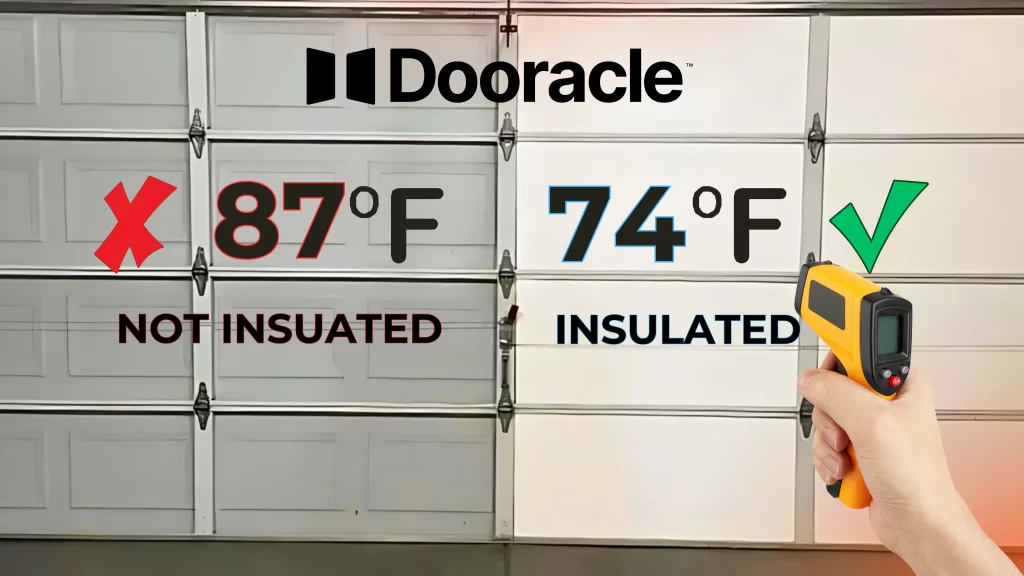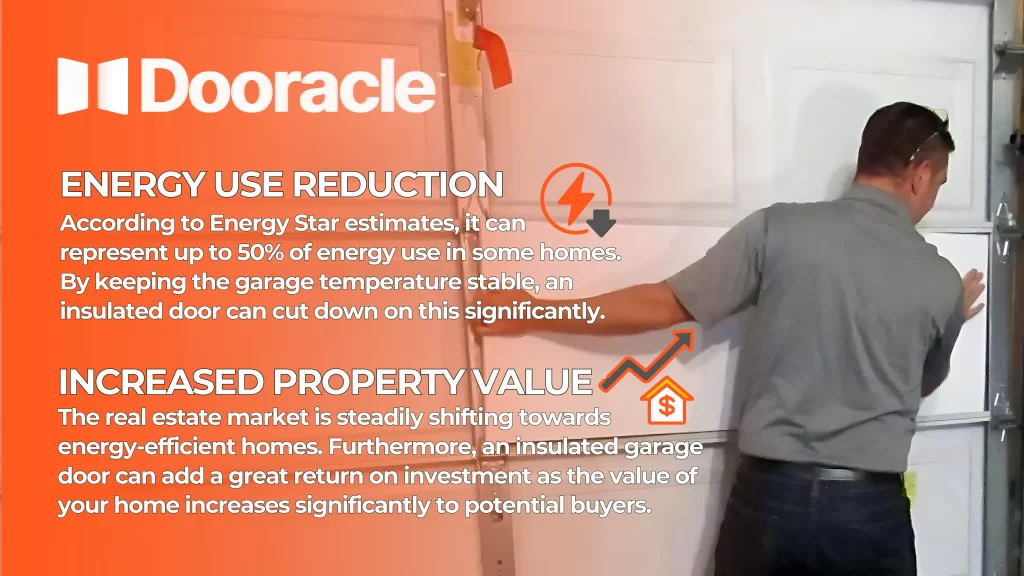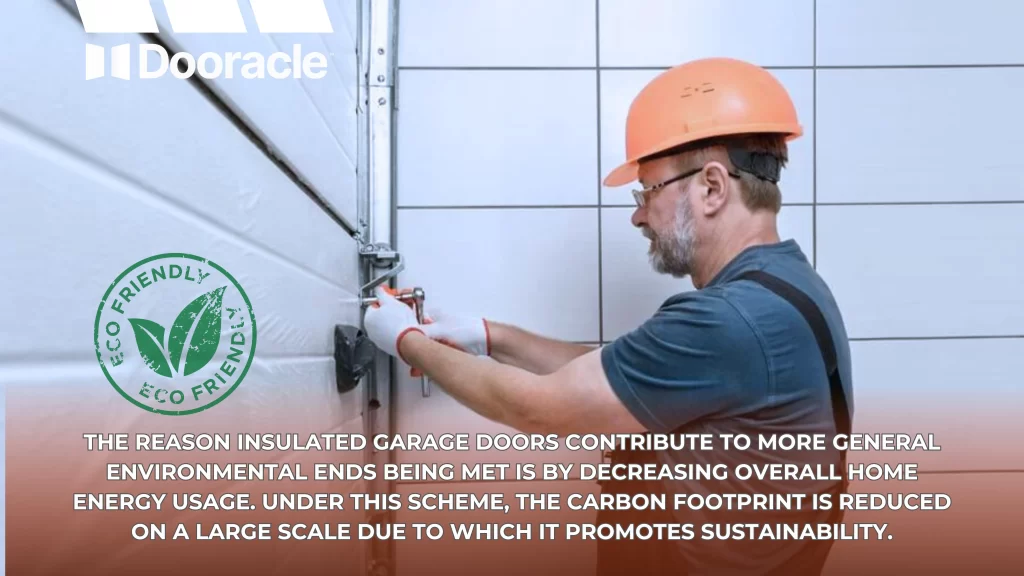How Garage Door Insulation Helps Keep Your Energy Bills Low
While trying to make a home more energy efficient, you might overlook one important area — the garage door. If you own a home with an attached garage, insulating your garage door can have a big impact on energy efficiency in general. In this extensive article, we answer some frequently asked questions and also explain how insulation affects thermal efficiency, can save energy costs significantly, reap environmental benefits & more all of which need to be considered while evaluating the cost-benefit equation for installing garage door insulation.

How Garage Door Insulation Works
Garage door insulation is what will keep a garage hot in winter and cool in summer. Its benefits are greatest in homes where the garage doubles as a traditional space like a shop, and in those that have rooms above or adjacent to it.
Types of Insulation
Polyurethane foam: Less dense panels that offer some insulation, it can be used in systems for a nonprofessional environment.
This type of foam sprays in as a liquid and expands through all the layers that make up your garage door, providing superior thermal resistance over other forms.
Insulated Garage Doors Offer More Up-side
Enhanced Energy Efficiency
Being insulating, these types of garage doors allow less heat to exchange, unlike wooden or traditional mechanisms. Not only does this decrease energy usage, but it also helps to ease the burden on residential HVAC systems which then allows for increased cost savings and environmental responsibility.
Cost Savings
Expense — A heated garage door has higher upfront costs over uninsulated alternatives but, savings on heating and cooling outweigh the difference. The doors keep indoor temperatures, so the HVAC system needs to be used less often and at a lower intensity.
Comfort
Insulating your garage makes it a more comfortable space, that serves multiple purposes beyond just storing your vehicles as well has the additional benefit of keeping unwanted heat or cold from infiltrating surrounding living areas.
Evaluating R-Values
Again, R-values are the insulation effectiveness; higher numbers indicate better insulating capabilities.
High R-Value Importance
The R-value is particularly important for maintaining an energy-efficient home, especially in climates that experience extreme temperatures. For returning Great White hunters, the vacuum will ensure minimal thermal
transfer meaning a comfortable interior at temperatures considerably colder or warmer than any expedition this side of Mercury.
What You Should Think About Ahead of Choosing an Insulated Garage Door
Climate Consideration
The need for insulation and the type that should be installed may differ based on your climate zone. The insulation requirements will vary in areas with moderate weather compared to those living in harsh winters and scorching summers.
Door Material Impact
Insulation – The base material of the garage door has an impact on how well it can keep garages insulated. Metals are not very good insulators, but when sandwiched with polyurethane they can do their job properly and keep heat from passing through.
Home Design Integration
For attached garages, an insulated garage door is essential as it will serve the purpose of a thermal barrier by separating outdoor conditions from the interior and helping maintain consistent climate control.
Improving Insulation by Extra Features
Weather Stripping
This will keep drafts out and make the garage door tighter for efficiency.
Thermal Breaks
Thermal breaks can be placed at this material transition to reduce the thermal bridging that can negate your insulation in the instance of a metal door.
Install and Service for Maximum Life
Proper Installation
It is very important to have your insulated garage doors appropriately installed. That being said, a poor installation can result in gaps and leaks that greatly reduce the insulation benefits.
Regular Maintenance
Without being too harsh, you can keep your garage door by regularly checking and replacing the seals and weather stripping wherever necessary to stop significant heat escaping while making sure that all of its insulation remains in pristine condition. This is good in that it keeps the door operating properly for as long as possible.
Active Use and ROI in the Real World
This can save you on utility bills and greatly help to increase the value of your home by investing in an insulated garage door.

Energy Use Reduction
According to Energy Star estimates, it can represent up to 50% of energy use in some homes. By keeping the garage temperature stable, an insulated door can cut down on this significantly.
Increased Property Value
The real estate market is steadily shifting towards energy-efficient homes. Furthermore, an insulated garage door can add a great return on investment as the value of your home increases significantly to potential buyers.
Environmental Impact
The reason insulated garage doors contribute to more general environmental ends being met is by decreasing overall home energy usage. Under this scheme, the carbon footprint is reduced on a large scale due to which it promotes sustainability.
Conclusion

It uses less material but its impact on your power bill and comfort is likely going to be the most immediately noticeable result of a well-insulated garage door about efficiency (followed only by replacing regular old incandescent with LEDs). This will not only save on heating and cooling costs but make it a lot more comfortable (and usable) space in your garage. To realize those potential energy-savings and better protect the environment, however, selecting the appropriate insulation type is just one part of it; installations must be done correctly, and doors adequately maintained.
